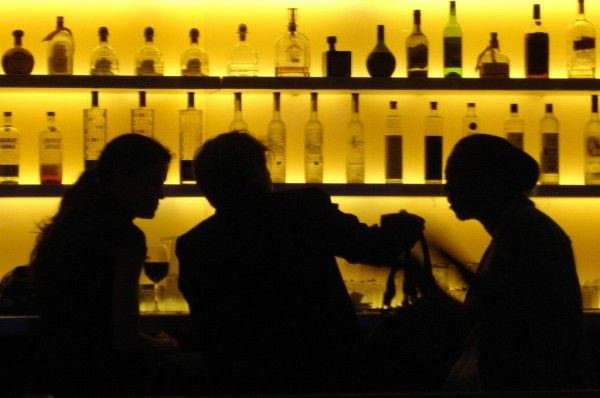Where You Drink May Affect Your Risk For Domestic Violence: Is At Home Safer Than At A Bar?

Out of alcohol abuse’s many ugly consequences, domestic violence is often one of the most destructive. Compounding the obvious fact that increased consumption makes for riskier interactions, new research suggests the actual drinking environment can influence a person’s risk for turning violent on his or her partner.
Published in the journal Addiction, the new study examined the ways in which drinking environment influenced domestic violence between partners. The analysis included six specific drinking contexts: at a bar, at a restaurant, parties at someone else’s home, parties at one’s own home, in a park, and quiet evenings at home. The team found male-to-female violence associated most often with men drinking at a bar and at someone else’s party, and with women drinking in parks and other public places.
The research team also found a link between female-to-male violence and men drinking at home, a press release stated.
“From a research perspective, these findings suggest that we need to consider what occurs within different drinking contexts (besides alcohol consumption) that might trigger partner aggression,” the release states, adding that the team’s new information could serve a preventative role in the future, as couples in risky relationships may elect to drink in different contexts.
To carry out the study, researchers from the Prevention Research Center in California and Arizona State University looked at more than 1,500 couples in California and assessed individual partners’ physically aggressive acts in relation to their drinking habits. Analyses also included measures of two commonly manifested traits in cases of alcohol-related intimate partner violence (IPV): impulsivity and adverse childhood experiences. Ultimately, the team’s results showed public gatherings had the greatest influence of male-to-female violence, while intimate times at home saw more instances of female-to-male disputes. Rarely did IPV occur in private, group settings.
“Frequently inviting friends over might be a marker for stronger social ties,” the researchers wrote, “which may help partners avoid or get out of potentially dangerous couplings.”
Causal relationships could not be drawn from the team’s present study, making interpreting the data a matter of loose associations that require further exploration. Men who regularly drink at bars, for instance, may become intoxicated and grow more violent; but the underlying “social ecological” mechanism, the team notes, for why he goes to the bar and drinks in excess still remains unclear.
“Furthermore, IPV victimization might cause increased alcohol consumption in some contexts (e.g. at home), rather than the alcohol consumption leading to subsequent IPV victimization,” the team noted. “Our data do not allow us to determine definitively the direction of causality.”
In this way, a man who acts as the aggressor toward his female partner may choose, through anger or neglect, to spend large portions of his time licking his wounds at the local bar. Women who face male-initiated violence at home may flee to a public space to avoid further confrontation. Likewise, men who see IPV at home from their significant other may stick around because they do not feel imminently threatened.
In any case, the researchers believe their findings shed an important light on how to actively prevent domestic violence. In addition to its benefit for future researchers investigating the topic, the team notes that couples should see the findings as evident of potential patterns in their own lives.
“A better understanding of the social interactions that occur in certain environments, and subsequent behaviors, will contribute to understanding what aspects of environments might be amenable to change, and subsequent decreases in problem behaviors such as partner violence,” the team concluded. “The findings, therefore, have critical implications for the prevention of alcohol-related IPV.”
Source: Mair C, Conradi C, Gruenewald P, Todd M, Remer L. Drinking context-specific associations between intimate partner violence and frequency and volume of alcohol consumption. Addiction. 2013.



























